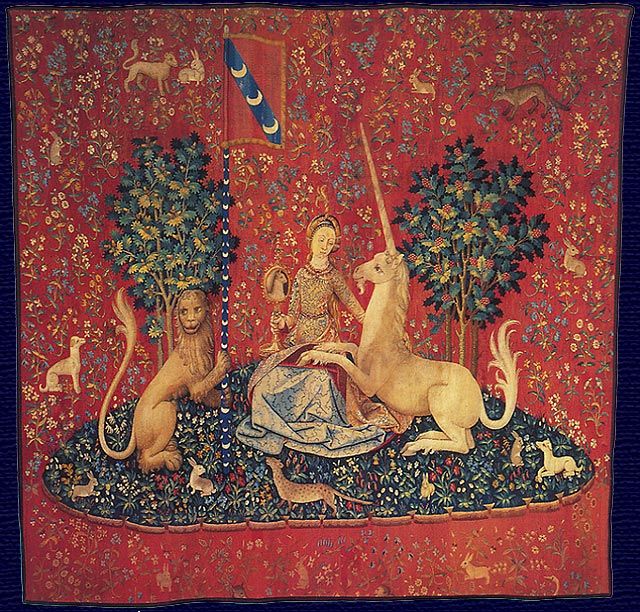
“To Catch a Unicorn”
A guest editorial by W.B.J. Williams
Do you know all the stories told of the unicorn? I thought I did. I knew well the legend that the horn can cure poison, and that the unicorn will only approach a virginal woman. I knew the medieval hunt for the unicorn as a complex and convoluted metaphor for the birth, death, and resurrection of Jesus. I knew the silly rhyme of the endless battle between a lion and a unicorn. I thought I knew unicorns. I did some research and wrote a novel, The Garden at the Roof of the World[1]. This tells the story of five brave women who, in the middle of the thirteenth century attempt to return to Eden to save the life of the unicorn who walked with Eve in Eden.
When I was asked to write a book about unicorns, (On the Reality, Mythology and Fantasies of Unicorns, due out from Dragonwell Publishing in September of 2021), I agreed, and went back to the notes I took when writing my novel. I thought I knew unicorns, but I expanded on my research and found I was wrong. I didn’t know squat about unicorns. Most of the stories in which a unicorn appears are more legendary than mythological. Most of the stories are not how unicorns aided or opposed some mythical hero. They’re about how unicorns interacted with real people, how to capture one, and the uses of their horn.
I didn’t know that one of the oldest stories about a unicorn regards how a unicorn (qilin) appeared at the birth of the legendary Emperor Huangdi in 2697 BCE. Huangdi was the third of the legendary emperors, and is one of the patron saints of Daoism. He is credited with the introduction of wooden houses, carts, boats, the bow and arrow, and writing. On a similar basis, a qilin appeared to Confucius’ mother. Confucius was a historical sage whose teaching informed the development of culture and society in Eastern Asia, especially in China. Confucius, according to another folk story would weep when a qilin was reported injured, as he knew this foretold his death.
I didn’t know that the Buddha reputedly compared himself with a unicorn. In the Mahāvastu, one of the oldest Buddhist manuscripts, you find the hymn, “Like a lion, without fear of the howling pack, like a gust of wind, ne’er trapped in a snare, like a lotus blossom, ne’er sprinkled by water, let me, like a unicorn, in solitude roam.”
I didn’t know that the great Genghis Khan also encountered a unicorn. His army had just defeated the Shah of Khwarazmshah and was poised to move against the Delhi Sultanate when he encountered a unicorn. The creature bowed low to Genghis Khan, which his advisor, Chucai, interpreted as it doing homage to him. Chucai advised Genghis Khan that the appearance of the unicorn was both a mandate and a message from heaven, and that he should not continue with his conquest of India.
I didn’t know the stories in Islamic folklore about how the unicorn fights with the elephant. The unicorn will attack an elephant on sight, spear it in the belly, lifting it up with its horn.
I didn’t know that in the Persian epic poem The Shahnameh, Iskander (Alexander the Great), must overcome a unicorn as one of the proofs of his worth. I didn’t know that in Islamic lore you don’t need to find a virgin willing to sit and wait in the wilds for a unicorn to come, but you can attract a unicorn by playing music. The beast is considered evil in Islamic folklore, and only a great hero can overcome it.
I didn’t know that the unicorn is also considered evil in the ancient Coptic church, and there is a story about how, when Jesus was laid in the tomb, a unicorn was sent to bring him to hell. Upon beholding Jesus alive, the unicorn fled in terror.
Ever since I started learning about unicorns, I’ve encountered them everywhere I go. There are always new stories to discover, new myths to be understood. They all trace back to the memory of Elasmotherium, a real but extinct creature whose memory has haunted humanity.
_______________
An InfoSec executive by day, W. B. J. Williams maintains a secret identity as an author. His publishing credits include The Garden at the Roof of the World (Dragonwell Publishing), “The InfoCoup” with Abyss & Apex[2], and Information Security for Service Oriented Architecture (CRC Press). On top of his forthcoming On the Reality, Mythology, and Fantasies of Unicorns, his How to Create an Information Security Program from Scratch is currently in production with CRC Press and is also coming out in September of 2021.
When not hunting for unicorns in the woods of Massachusetts with his wife of thirty years, or haunting used bookstores to her dismay, he can be found doing readings and on panels at ReaderCon, Arisia, and Boskone. Find him at https://wbj-williams.net/index.html and http://wbjwilliams.wordpress.com/
[1] See A&A’s review of The Garden at the Roof of the World, here.

I just finished reading Walt’s Unicorn ms.
Elasmotherium was a one-horned Pleistocene behemoth that survived long enough for our ancestors to capture its image on cave walls, and perhaps long enough to be described in travelers’ written accounts and give rise to a myriad myths and legends of the unicorn. In The Reality, Mythology, and Fantasies of Unicorns, Walter B. J. Willams offers an affectionate, scholarly, and exhaustive account of the idea of the unicorn. His approach is both more serious and more thorough than Avram Davidson’s classic Spoor of the Unicorn (https://www.baen.com/Chapters/9781625791177/9781625791177___1.htm).